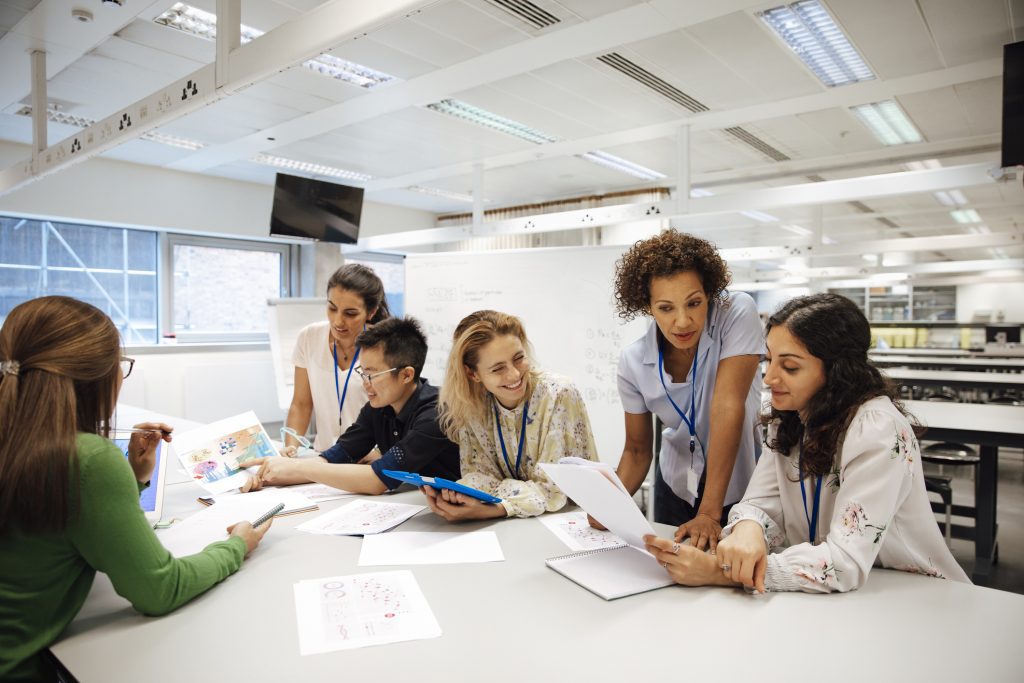
Overview
“Discussion has two features that make it a powerful teaching tool. If different voices, different perspectives, and a range of experiences are shared, they can lead the discussion to new places. Ideas emerge that participants (including the teacher) haven’t considered before. The comments flow, circle each other, and connect unexpectedly. Participants are engaged—with the content and each other. In a good classroom discussion, you can feel the learning happening! Secondly, discussions have power derived from their uniqueness. The combination of comments, questions, ideas, and insights shared in a discussion become a knowledge base created by that group.”
– Maryellen Wiemer
Strategies
Encourage Student Participation
While some students willingly speak up, others have difficulty sharing their ideas so try to keep student voices balanced. Asking open-ended questions is also a good way to get the class talking.
Keep Discussion Organized and Focused
Classroom discussions can sometimes ebb and flow in surprising ways, but it is important to keep students focused on the original topic. Make sure discussion questions are clear and visible. Acknowledge off-topic responses and try to link them back to the original topic.
References
- Dr. Maryellen Weimer: Facilitating Discussion: Five Factors that Books Student Engagement
- Yale University: Effective Class Discussions
- Jack Byrd (Interactivity Foundation): Guidebook for Student-Centered Classroom Discussions (.pdf)
- Dr. Bridget O. J. Omatseye (2007): The Discussion Teaching Method: An Interactive Strategy in Tertiary Learning (.pdf)
- Walter C. Parker & Diana Hess (2001): Teaching with and for Discussion